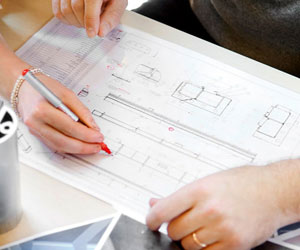Naval Architect
Tasks & duties

Naval architects may do some or all of the following:
-
create or adapt designs for ships, yachts or pleasure craft
-
prepare or direct the preparation of drawings, written plans and technical calculations
-
conduct hydrodynamic (water pressures and flows) and structural computer-based testing
-
conduct physical scale modelling (tank testing) and analyse results
-
create an analysis of a boat or ship to ensure it will be stable
-
manage the design and building of the boat or ship
-
oversee repairs, changes and upgrades
-
plan approval work (checking proposed building plans against regulations)
-
consult with clients in New Zealand and overseas, professionals and government officials
-
write reports and feasibility studies about possible projects for private clients, government or the defence force
-
provide analysis and research for cases tried under maritime law
-
set standards and regulations for the marine industry
-
manage shipyards
Specialisations
Naval architects and boat designers carry out similar tasks. However, naval architects are qualified to work on any type of vessel, while boat designers are only qualified to deal with vessels up to a certain size.
Naval architects may specialise in working on certain types of vessels, such as submarines or cruise liners; boat designers may specialise in vessels such as mussel harvesters or pleasure boats.
Skills & knowledge
Naval architects need to have:
-
knowledge of different styles of boats, yachts and ships
-
the ability to visualise vessels and spaces, and use this to translate their client's ideas into reality
-
understanding of boat building methods and requirements
-
knowledge of boat building materials, including the ways various materials perform in different situations
-
knowledge of structural engineering
-
understanding of hydrodynamics (water pressures and flows) and aerodynamics (air pressure and flows) and the effect they can have on vessels
-
good understanding of boat handling
-
knowledge of marine standards and safety margins
-
design, draughting and sketching skills
-
skill using computer-aided design (CAD) and 3-D modelling programs
-
knowledge of math and physics
-
communication skills
-
writing skills
Self-employed naval architects also need to have business skills.
Entry requirements
To become a naval architect you need to have a Bachelor of Engineering, majoring in naval architecture. However, this major is not available in New Zealand so people who become naval architects train overseas, or complete an engineering degree in New Zealand, followed by further training at an overseas university or training institute specialising in naval architecture.
There are no specific entry requirements to become a boat designer but a degree or diploma in engineering or design is recommended. There are also diploma level boat design courses available overseas that you may study by correspondence. New Zealand boat building qualifications may also be useful.
Secondary education
A tertiary entrance qualification is needed. Useful subjects include maths, physics, english, art and graphics.
Training on the job
Naval architects gain many skills on the job. They may also study while working to increase their skills. Naval architects may be members of the Royal Institution of Naval Architects - NZ Division, which provides information on developments in the industry as well as reports, resources and a discussion forum.
Naval architects and boat designers also subscribe to various professional journals and publications to keep up to date with developments in the industry.
Useful experience
Useful experience for naval architects includes:
-
familiarity with boats
-
boat building
-
draughting or use of design and CAD software
-
architectural or engineering work
-
shipyard work
-
work as a mechanic
Related courses
Architecture
Marine Construction
Mechanical Engineering
For more information, please refer to Career Services.
Sponsors include
Document Actions
